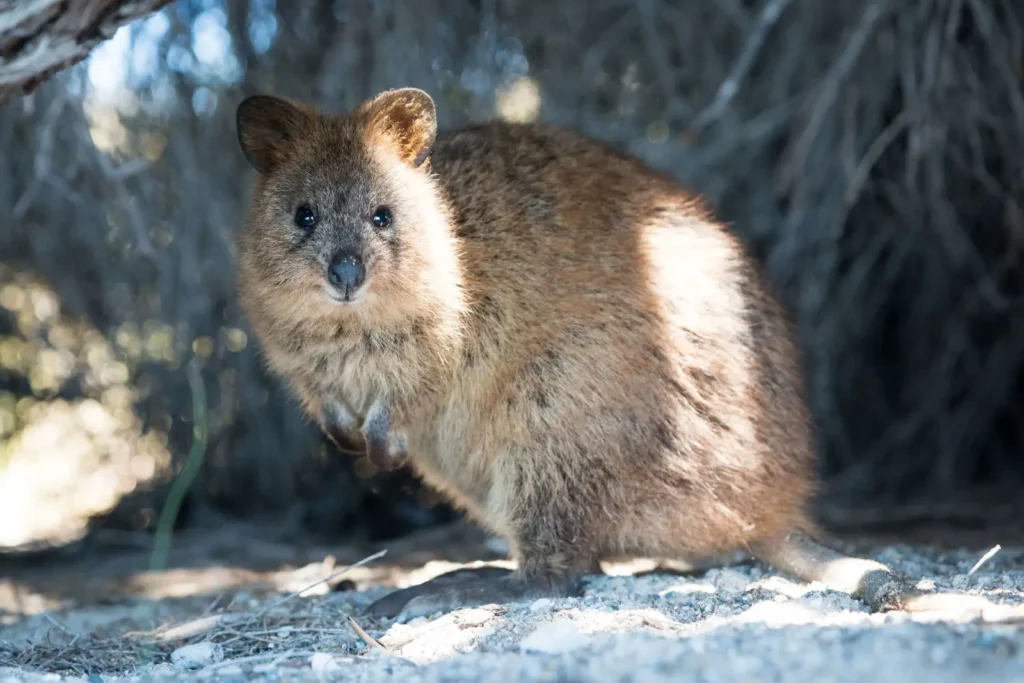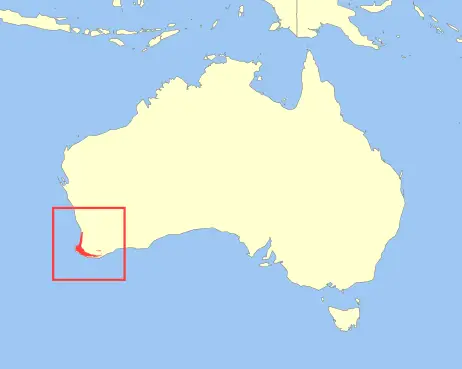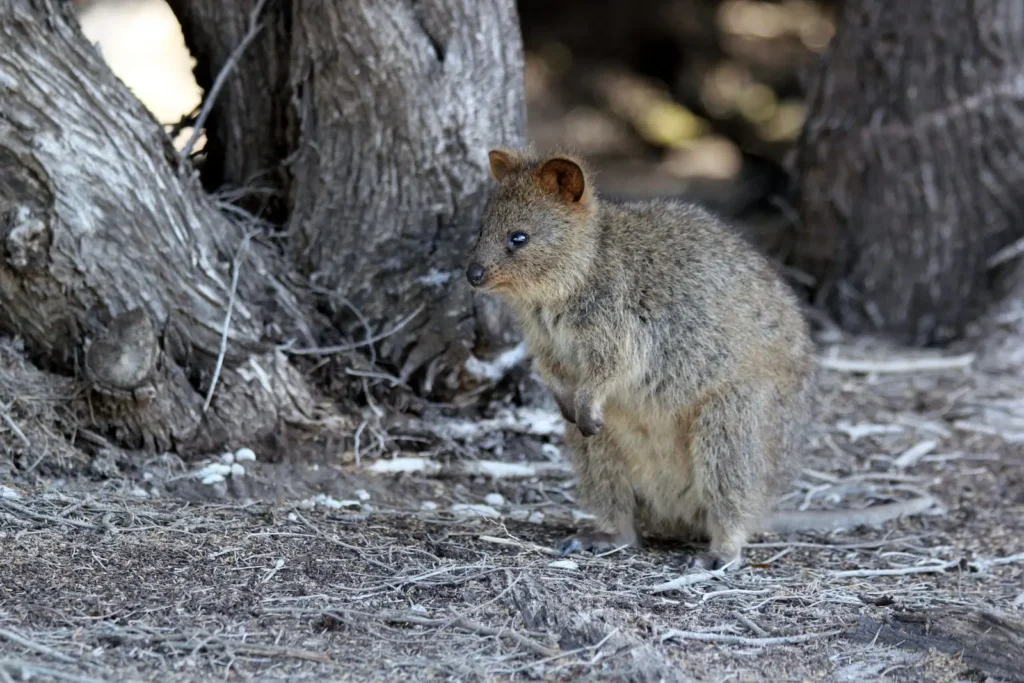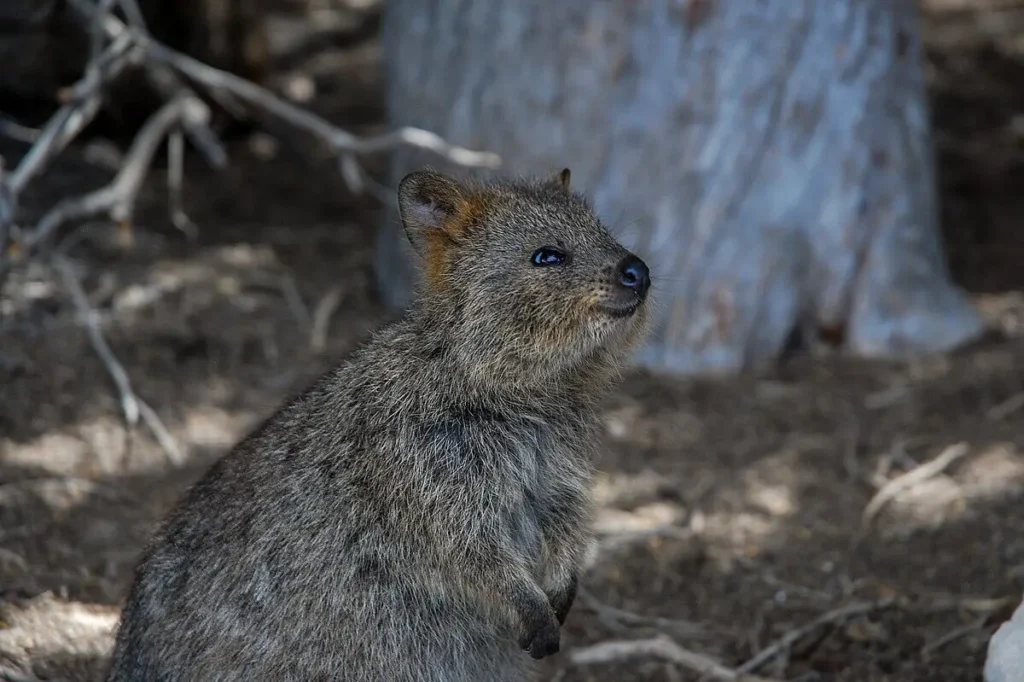Kwoka (Setonix brachyurus) is a small marsupial mammal that has become known for its distinctive smile and friendly appearance. This species is native to Australia and lives mainly on islands, including Rottnest Island.

Classification and scientific name
• The Kingdom: Animals (Animalia)
• Type: Chordal (Chordata)
• Class: Mammals (Mammalia)
• Row: Marsupials (Diprotodontia)
• Family: Kangaroos (Macropodidae)
• Gender: Setonix
• View: Setonix brachyurus
Physical characteristics
📌 Dimensions and weight
- Body length: 40 to 54 cm
- Weight: about 2.5-5 kg
🎨 Colors and features
✔ It is light or gray in color with characteristic dark spots on the sides and belly.
Kwoks have round, large eyes and sensitive ears.
✔ Compared to other marsupials, quokas have shorter tails.

Range and habitat
🔵 Spread
✔ Kwoks live only on a few islands off the coast of Western Australia, most notably on Rottnest Island.
✔ Their population is limited, so kooks are quite rare and can be found only in a few nature reserves.
🔴 Living environment
They prefer dry, grassy plains and wooded areas.
✔ These animals are accustomed to high temperatures and hot climates on islands where Mediterranean conditions prevail.

Lifestyle and behavior
🌟 Social structure
✔ Quokkas are social animals that usually live in small groups.
✔ They are active during the day, rarely going out at night, which is rare for marsupials.
🌟 Activity time
✔ The main time of activity is in the morning and evening, when the temperature is most comfortable.
✔ They are accustomed to human surroundings, so you can often see kwoks on Rottnest Island, where they trust tourists.
Food and hunting
🍖 The main meal
- Quokkas are herbivores, they eat grasses, leaves, flowers, and fruits.
- Their diet may include a variety of vegetation species that grow on the islands where they live.
💪 Features of nutrition
✔ They mostly feed on the ground, although they can sometimes climb trees or shrubs to get food.
🍴 Food technology
✔ Kooks eat slowly and concentrated, rarely wasting time searching. Their ability to find food in the limited spaces of the island is essential for survival.
Protection and threats
⚠️ Main threats
Threats to quokkas include habitat loss, predators such as domestic dogs, and climate change.
✔ It can also be direct threats from people if their natural environment is damaged.
📉 Security status:
✔ Kookaburras have a Vulnerable status due to their limited range and declining numbers in natural areas. They are protected in Australia.

Reproduction and life cycle
❤️ Reproduction
- Quokkas breed throughout the year, but the peak of breeding occurs in the spring and summer.
- Females give birth to one baby, which spends 31 days in the uterus and then lives in the pouch for several months.
❤️ Life span:
- In the wild, kookaburras can live up to 10 years, but in nature reserves they often have a shorter lifespan due to human and predator impacts.
Interesting facts about kwoka
✔ Their smile is natural, but it looks like they are smiling all the time. This is the reason for the popularity of kwoks on social media.
✔ Quokkas are popular among tourists on Rottnest Island, where they are not afraid to approach people.
✔ In 2012, quokkas became a symbol of the Australian ecosystem and conservation.
Conclusion
Kwoka - is an adorable and friendly animal that has gained popularity for its smile. They are an important part of the Australian ecosystem and deserve attention and protection due to their limited population and range. 🌿🦘